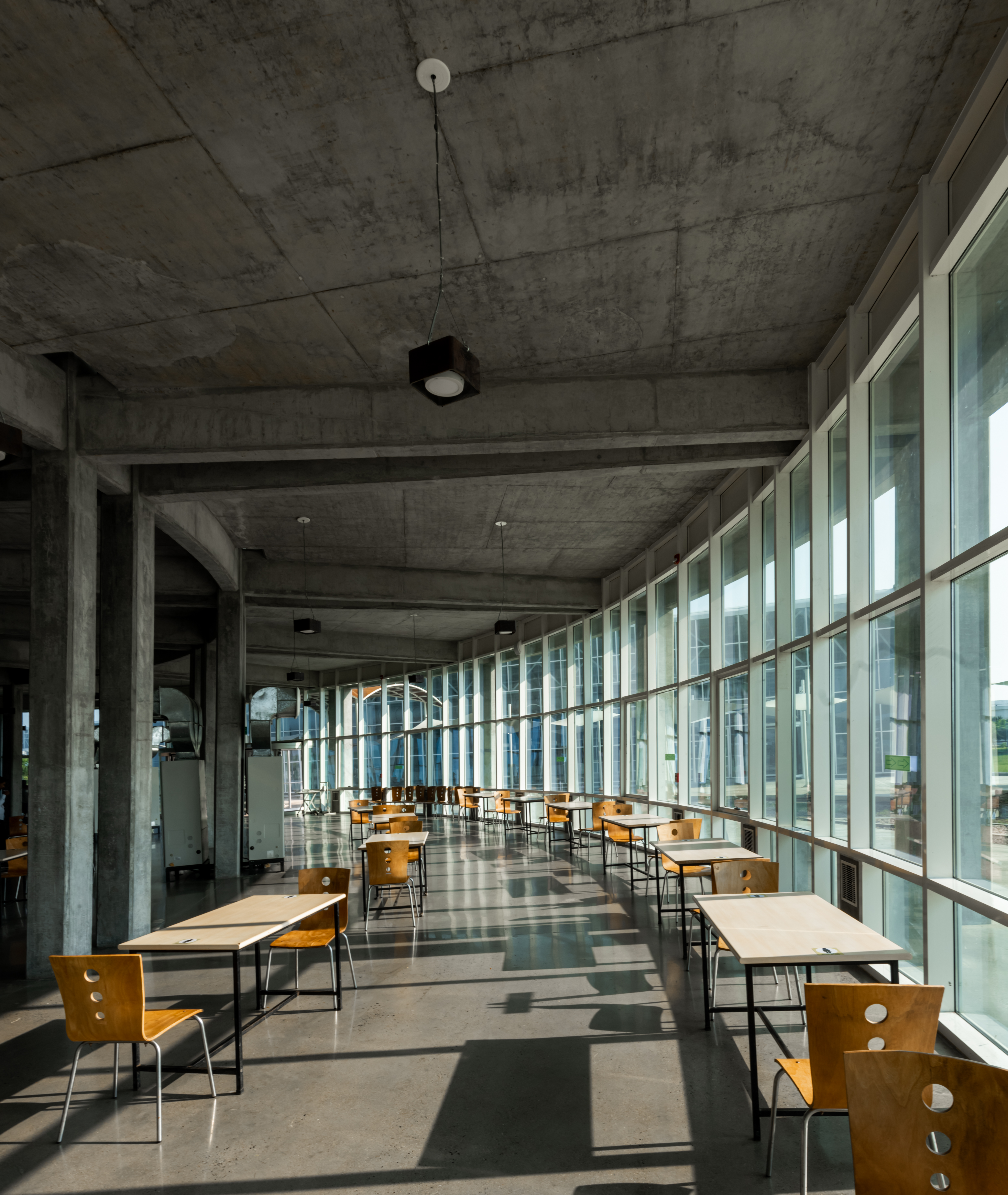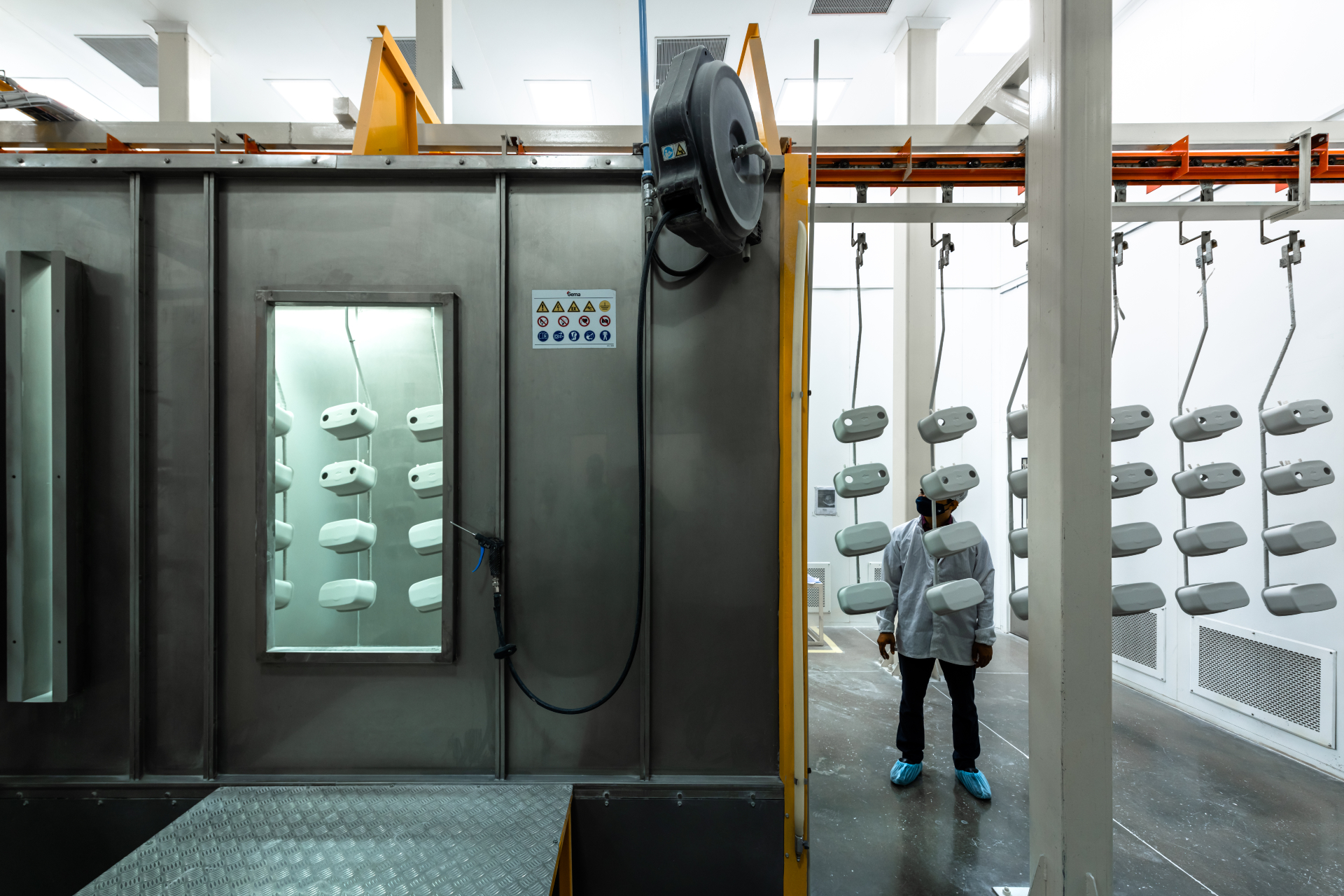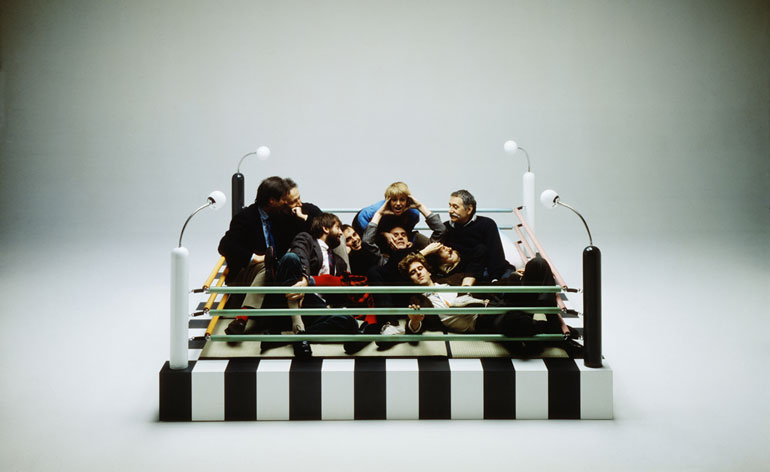Studio Saar’s modern industrial facility in India reimagines factory architecture
The new Secure factory in Sanand by Studio Saar brings industrial architecture to the 21st century
Ankit Jain - Photography

Studio Saar has just completed a contemporary industrial facility in India's region of Gujarat; welcome to Indian multi-national electronics manufacturer Secure Meters outpost in the city of Sanand. The architects, based between Frome, Somerset (UK) and Udaipur, Rajastan (India), have crafted a modern space that ticks the boxes for the state of the art production its function requires, while also providing a work environment that promotes wellness for its employees and sustainable architecture, through a strategic eco approach.
Indeed the user's experience was placed at the heart of the design process with this project by the young studio, which is headed by partners Ananya Singhal and Jonny Buckland. This means that the factory campus encompasses – beyond the main manufacturing facility, reception building and utility bay – a canteen and recreation centre for the employees to use. Spread across a lushly planted green site, the four buildings are connected by open air walkways that are sheltered by a white, geometric canopy structure.

The campus is further enhanced by a seasonal lake (which 'fluctuates between one to three acres in size to allow for rainwater harvesting,' the architects explain) and will have an additional 2,000 trees planted on the estate in due course. The presence of greenery and water is a nod to the site's previous life as a former lakebed, which has recently been repurposed and earmarked for industrial development. Meanwhile, solar panels take care of some 50% of the overall energy demand, and clever insulation and an integrated floor-cooling system help manage the temperature inside naturally.
The complex's overall aesthetic is clean and utilitarian, putting function at its core and alluding to its industrial use. Swathes of glazing brings light in, white plaster surfaces, concrete and grey natural stone complete a fairly restricted but effective and calming material palette that compliments the various uses housed within. Inside, high ceilinged, bright, open plan spaces are far removed from the conventional image of a hectic working factory, bringing the typology to the 21st century.
'We were keen to demonstrate to our client how factories should and can be inspiring places to work and bring joy to the people that use them. By placing the canteen at the centre of the development, we have been able to provide a place for workers to relax and unwind. This project has not been without its challenges, but through close collaboration with the project team and efficient engineering we have been able to create a series of buildings that are genuinely adaptable to meet the everchanging needs of the teams to ensure its longevity for future years,' says Singhal.











INFORMATION
studiosaar.design
Receive our daily digest of inspiration, escapism and design stories from around the world direct to your inbox.
Ellie Stathaki is the Architecture & Environment Director at Wallpaper*. She trained as an architect at the Aristotle University of Thessaloniki in Greece and studied architectural history at the Bartlett in London. Now an established journalist, she has been a member of the Wallpaper* team since 2006, visiting buildings across the globe and interviewing leading architects such as Tadao Ando and Rem Koolhaas. Ellie has also taken part in judging panels, moderated events, curated shows and contributed in books, such as The Contemporary House (Thames & Hudson, 2018), Glenn Sestig Architecture Diary (2020) and House London (2022).
-
 The new Tudor Ranger watches master perfectly executed simplicity
The new Tudor Ranger watches master perfectly executed simplicityThe Tudor Ranger watches look back to the 1960s for a clean and legible design
-
 This late-night hangout brings back 1970s glam to LA’s Sunset Boulevard
This late-night hangout brings back 1970s glam to LA’s Sunset BoulevardGalerie On Sunset is primed for strong drinks, shared plates, live music, and long nights
-
 How Memphis developed from an informal gathering of restless creatives into one of design's most influential movements
How Memphis developed from an informal gathering of restless creatives into one of design's most influential movementsEverything you want to know about Memphis Design, from its history to its leading figures to the pieces to know (and buy)
-
 A day in Ahmedabad – tour the Indian city’s captivating architecture
A day in Ahmedabad – tour the Indian city’s captivating architectureIndia’s Ahmedabad has a thriving architecture scene and a rich legacy; architect, writer and photographer Nipun Prabhakar shares his tips for the perfect tour
-
 Inside a creative couple's magical, circular Indian home, 'like a fruit'
Inside a creative couple's magical, circular Indian home, 'like a fruit'We paid a visit to architect Sandeep Virmani and social activist Sushma Iyengar at their circular home in Bhuj, India; architect, writer and photographer Nipun Prabhakar tells the story
-
 The Architecture Edit: Wallpaper’s houses of the month
The Architecture Edit: Wallpaper’s houses of the monthFrom wineries-turned-music studios to fire-resistant holiday homes, these are the properties that have most impressed the Wallpaper* editors this month
-
 A refined Indian country residence reimagines the farmhouse
A refined Indian country residence reimagines the farmhouseSet among Karnataka’s rolling fields and forest, House by the Grove by Taliesyn Design & Architecture combines modern materials with an open approach to the elements
-
 Half bridge, half home: Wallmakers’ latest project takes architecture to daring new heights
Half bridge, half home: Wallmakers’ latest project takes architecture to daring new heightsHovering above a forest stream in Maharashtra, Bridge House pushes the limits of engineering and eco-conscious design
-
 The Architecture Edit: Wallpaper’s houses of the month
The Architecture Edit: Wallpaper’s houses of the monthFrom Malibu beach pads to cosy cabins blanketed in snow, Wallpaper* has featured some incredible homes this month. We profile our favourites below
-
 Cascading greenery softens the brutalist façade of this Hyderabad home
Cascading greenery softens the brutalist façade of this Hyderabad homeThe monolithic shell of this home evokes a familiar brutalist narrative, but designer 23 Degrees Design Shift softens the aesthetic by shrouding Antriya in lush planting
-
 A lush Bengaluru villa is a home that acts as a vessel for nature
A lush Bengaluru villa is a home that acts as a vessel for natureWith this new Bengaluru villa, Purple Ink Studio wanted gardens tucked into the fabric of the home within this urban residence in India's 'Garden City'